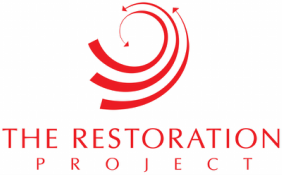The Pillars of Restoration
Your people will rebuild the ancient ruins and will raise up the age-old foundations; you will be called Repairer of Broken Walls, Restorer of Streets with Dwellings. Isaiah 58:12
In March 1965, Daniel Patrick Moynihan, a sociologist at the time, issued a report - The Negro Family: A Case for National Action. In that report, Moynihan warned of a looming catastrophe for the Black family because in his view “the Negro community has been forced (emphasis mine) into a matriarchal structure which, because it is to out of line with the rest of the American society, seriously retards the progress of the group as a whole, and imposes a crushing burden on the Negro male and, in consequence, on a great many Negro women as well. At the time, few Black leaders agreed with his conclusion that “Three centuries of injustice have brought about deep-seated structural distortions in the life of the Negro America”. They disagreed that intervention was needed to correct the distortions.
Moynihan warned that Black men were being alienated from their roles as husbands and fathers in the Black family. His prediction of distortions in the Black family structured have proved true and government reports are that more than 72% of Black children grow up in single parent female headed households. This matriarchal pattern has consumed the Black family over the past 47 years and the case for national action remains.
The rebuilding of the family is essential to creating a culture of uprightness, evenhandedness and virtue in Black America and the restoration of fatherhood is vital to that culture.
Download The State of the Black Family In America, a report by the Marriage and Religion Research Institute.
Pillar One: Sanctity of Life
In religion and ethics, inviolability or sanctity of life is a principle of implied protection regarding aspects of sentient life which are said to be holy, sacred, or otherwise of such value that they are not to be violated.
The leading cause of death in the Black community is not HIV-AIDS, Cancer, Homicide, Accidents, Diabetes or Heart Disease. Tragically the leading cause of death is abortion. More than 400,000 black babies die every year at the abortionist’s hand. That is more than 1100 babies every day. In New York City, the numbers have reached epidemic levels and more black babies are aborted than born alive. In 2014 for every 1,000 black babies born, 1,223 were aborted according to the NYC Department of Health. As Supreme Court Justice Ruth Bader Ginsburg said in 2009, Roe v. Wade enabled them to address “the population we don’t want too many of”. The numbers do not lie.
The leading cause of death in the Black community is not HIV-AIDS, Cancer, Homicide, Accidents, Diabetes or Heart Disease. Tragically the leading cause of death is abortion. More than 400,000 black babies die every year at the abortionist’s hand. That is more than 1100 babies every day. In New York City, the numbers have reached epidemic levels and more black babies are aborted than born alive. In 2014 for every 1,000 black babies born, 1,223 were aborted according to the NYC Department of Health. As Supreme Court Justice Ruth Bader Ginsburg said in 2009, Roe v. Wade enabled them to address “the population we don’t want too many of”. The numbers do not lie.
Pillar Two: Family
[fam-uh-lee, fam-lee] noun, plural fam•i•lies
adjective noun - A basic social unit consisting of parents and their children, considered as a
group, whether dwelling together or not:
the traditional family.
adjective noun - A basic social unit consisting of parents and their children, considered as a
group, whether dwelling together or not:
the traditional family.
Today, the basic social unit of parents and their children has changed and the Leave it to Beaver or Cosby Show model of the family has become the exception rather than the rule. This is especially true in the black community where today, only 28% of black children have the experience of growing up with their dad in the Nothing is more heartbreaking than to hear of a young girl, who while visiting a friend whose household mirrors that of the traditional family, point to the dad and ask in awe-struck voice “does he sleep here all the time?” This young girl had never had the experience of her dad sleeping all night in their home. In her young eyes, a dad was someone that visited during the day. In many cases, especially in the black community, dad is someone to be visited in one of the prison systems where one of every 15 black males 18 and older languishes.
Pillar Three: Education
ˌejəˈkāSH(ə)n/
noun
the process of receiving or giving systematic instruction, especially at a school or university.
noun
the process of receiving or giving systematic instruction, especially at a school or university.
Education is a form of learning. Some say it is preparation for wise leadership and personal achievement, and others believe it to be the opening of your mind to new ideas. Here and now we say it is all three, and sorely needed among our youth. The challenges of educating today’s youth have fallen far short of the expectations once promoted in America. In fact, the education standards are so poor that America’s students now fall far below and aren't progressing to catch up to their foreign peers.
The importance of education has not changed and more than ever, changes are needed to ensure America’s students can advance, once again taking their places as the leaders. There must be an increase in accountability among teachers at all levels. At the same time, parents must be empowered to select schools that best fit their child’s education needs. Whether in public, private or parochial schools, parents know best what school setting will give their children the most opportunity to succeed.



